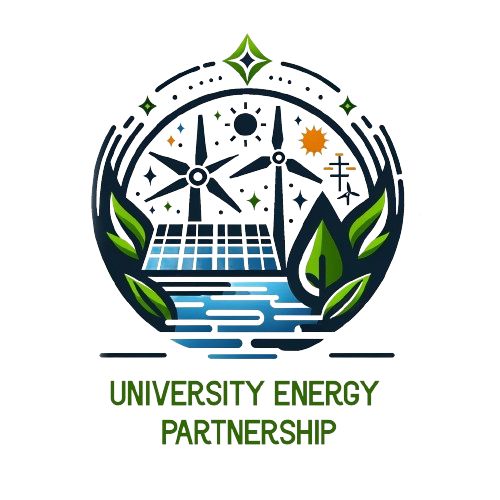Solar energy has come a long way since its inception, and it continues to evolve at a rapid pace. As the world grapples with the challenges of climate change and the need to transition to cleaner sources of energy, solar power stands out as a pivotal solution. In this article, we will explore the current state of solar energy, delve into the latest trends, and discuss innovative technologies that promise to shape the future of this renewable energy source.
The Current State of Solar Energy
Solar Power’s Remarkable Growth
Over the past few decades, solar power has experienced exponential growth. The cost of solar panels has plummeted, making them more accessible to both homeowners and businesses. Governments around the world have implemented incentives and subsidies to encourage the adoption of solar energy, resulting in a significant increase in installed solar capacity.
Solar Energy’s Environmental Benefits
One of the primary reasons for the growth of solar energy is its environmental benefits. Solar power generation produces no greenhouse gas emissions, making it a clean and sustainable energy source. By reducing our reliance on fossil fuels, solar energy plays a crucial role in mitigating climate change and reducing air pollution.
Advancements in Solar Technology
Advancements in solar technology have played a vital role in making solar energy more efficient and cost-effective. Some key innovations include:
1. High-Efficiency Solar Panels
The development of high-efficiency solar panels, such as monocrystalline and polycrystalline cells, has significantly improved the energy output of solar installations. These panels capture more sunlight and convert it into electricity efficiently.
2. Thin-Film Solar Cells
Thin-film solar cells, which are lighter and more flexible than traditional silicon-based panels, have opened up new possibilities for solar integration. They can be applied to various surfaces, including building materials and clothing, making solar power more versatile.
3. Solar Tracking Systems
Solar tracking systems, which move solar panels to follow the sun’s path throughout the day, maximize energy capture. These systems increase the efficiency of solar installations by up to 25%, especially in regions with fluctuating weather patterns.
4. Energy Storage Solutions
Innovations in energy storage, such as lithium-ion batteries, have made it possible to store excess energy generated by solar panels for use during cloudy days or at night. This has made solar power more reliable and independent of weather conditions.
Trends Shaping the Future of Solar Energy
Solar Energy in Urban Environments
As the world’s population continues to migrate to urban areas, integrating solar energy into cities has become a significant trend. Solar panels on rooftops, solar-powered streetlights, and solar canopies in parking lots are just a few examples of how urban areas harness the sun’s power to meet their energy needs. Solar energy in urban environments reduces carbon emissions and enhances energy resilience and independence.
Solar-Integrated Smart Grids
The integration of solar power into smart grids is another key trend in the industry. Smart grids allow for efficient energy production, distribution, and consumption management. Solar energy can be seamlessly integrated into these grids, enabling real-time monitoring and optimization of energy generation and consumption. This ensures that solar power is used efficiently and that excess energy can be stored or sold back to the grid.
Bifacial Solar Panels
Bifacial solar panels are a promising innovation in solar technology. These panels can capture sunlight from both the front and rear sides, increasing their efficiency. Bifacial panels are particularly advantageous in snowy or reflective environments, where they can generate more electricity by capturing reflected sunlight.
Floating Solar Farms
Floating solar farms, also known as “floatovoltaics,” are gaining popularity as a way to harness solar energy on bodies of water. These installations save land space and provide cooling effects to solar panels, which can increase their efficiency. Floating solar farms are sometimes being deployed in reservoirs, lakes, and even the open sea.
Solar-Powered Desalination
The need for freshwater is a pressing global issue, and solar-powered desalination plants offer a sustainable solution. These facilities use solar energy to desalinate seawater, providing a renewable source of freshwater for coastal regions. Solar desalination is environmentally friendly and economically viable in many arid regions.
Innovations Shaping the Future of Solar Energy
1. Perovskite Solar Cells
Perovskite solar cells are a relatively new technology that holds great promise. They are cheaper to manufacture and more flexible than traditional silicon-based cells. Researchers are actively working on improving their efficiency and durability, and once commercialized, perovskite solar cells could further reduce the cost of solar power.
2. Solar-powered EV Charging Stations
The transition to electric vehicles (EVs) is crucial to reducing greenhouse gas emissions. Solar-powered EV charging stations are emerging as a sustainable way to charge electric vehicles. These stations use solar panels to generate electricity for EV charging, reducing the carbon footprint of transportation.
3. Solar Paint and Solar Windows
Imagine a world where entire buildings can generate electricity from their surfaces. Solar paint and solar windows are innovative concepts that aim to turn any exposed surface into a solar panel. While these technologies are still in the experimental stage, they hold the potential to revolutionize how we harness solar energy.
4. Solar-Powered Water Splitting
Solar-powered water splitting is a technology that uses solar energy to split water molecules into hydrogen and oxygen. The hydrogen can be stored and used as a clean fuel source. This process has the potential to revolutionize the energy storage industry and provide a sustainable source of hydrogen for various applications.
Challenges and Future Prospects
While the future of solar energy looks promising, there are challenges that need to be addressed. These challenges include:
- Intermittency: Solar power generation is intermittent and depends on weather conditions. Improved energy storage solutions and grid integration will be crucial to overcoming this challenge.
- Energy Storage Costs: Although energy storage solutions have advanced, the cost of batteries remains relatively high. Continued research and development are needed to make energy storage more affordable.
- Environmental Impact: The production and disposal of solar panels can have environmental impacts. Recycling and sustainable manufacturing practices are essential to minimize these effects.
- Grid Integration: Integrating large-scale solar installations into existing grids can be complex. Investments in grid infrastructure and regulatory support will be necessary to facilitate this transition.
Despite these challenges, the future of solar energy is bright. The ongoing development of innovative technologies and a growing commitment to sustainability position solar power as a central player in the global energy landscape. As we continue to harness the power of the sun, we move closer to a more sustainable and clean energy future.
Bottom Line
In conclusion, the future of solar energy is brimming with promise and potential. The remarkable growth of solar power, driven by cost reductions, environmental benefits, and technological advancements, has positioned it as a cornerstone of the world’s transition to cleaner and more sustainable energy sources.
Current trends, such as solar energy integration in urban environments, smart grids, bifacial panels, floating solar farms, and solar-powered desalination, demonstrate the adaptability and versatility of solar technology. These trends reduce carbon emissions and address critical global challenges, including urbanization, freshwater scarcity, and climate change.
Moreover, ongoing innovations, such as perovskite solar cells, solar-powered EV charging, solar paint, and solar windows, hold the potential to further revolutionize the energy landscape. These developments underscore solar energy’s resilience and adaptability in meeting society’s evolving needs.
While challenges like intermittency, energy storage costs, environmental impact, and grid integration persist, they are not insurmountable obstacles. With continued research, innovation, and concerted efforts by governments, industries, and communities worldwide, these challenges can be addressed effectively.
As we look to the horizon, the future of solar energy shines brightly, offering a path toward a more sustainable and environmentally responsible future. By embracing these trends and innovations, we can harness the sun’s full potential, reduce our reliance on fossil fuels, mitigate climate change, and usher in an era of clean, renewable energy for generations to come. Solar power is not just an energy source but a beacon of hope for a brighter and greener world.

